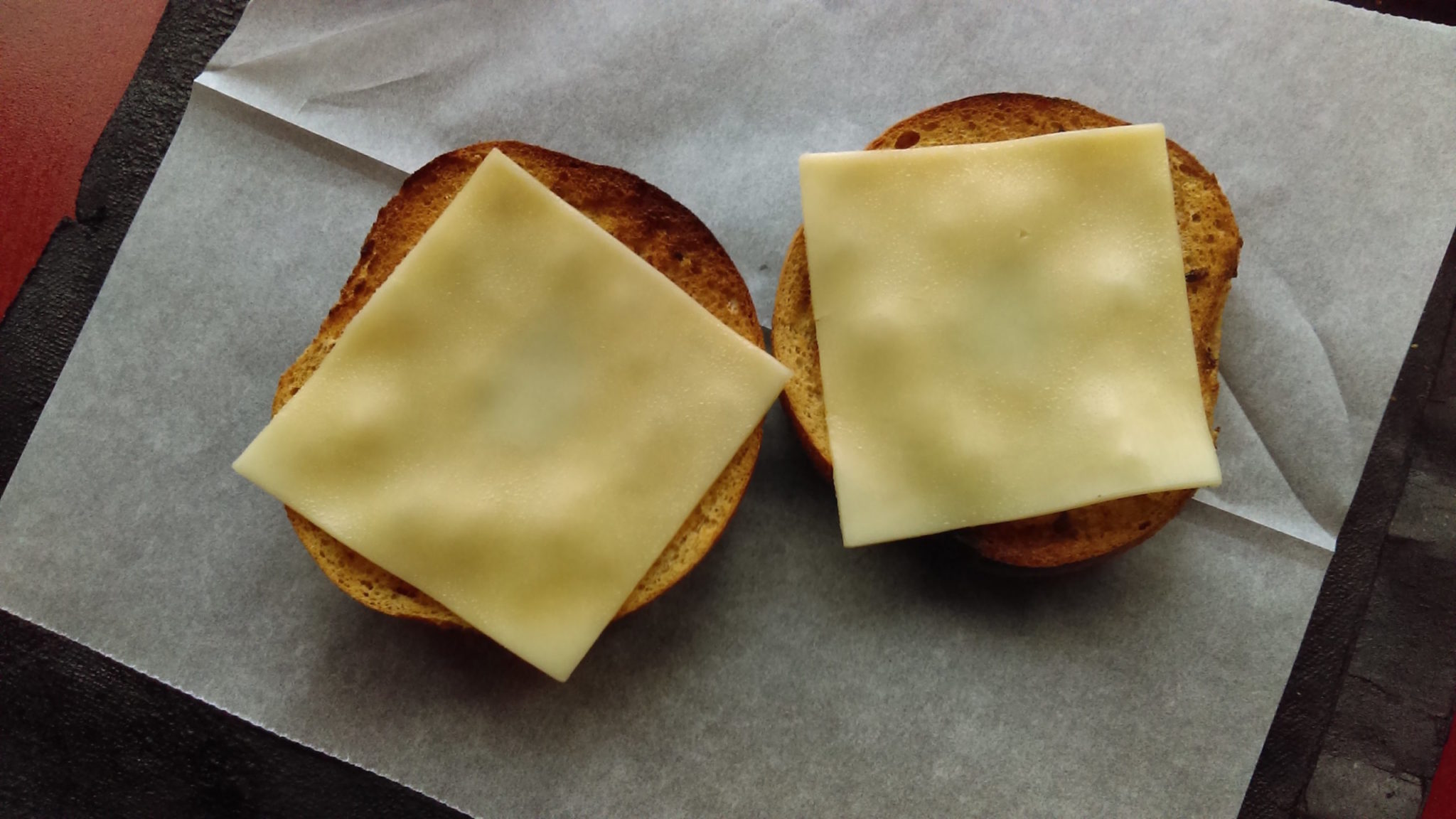We get it: You’re not going to Dunkin’ Donuts looking for kale smoothies. Maybe you just really want a sugary, fatty, cream-filled pastry and don’t need anyone to judge you thank you very much.
However, have you ever been at an airport where the only real breakfast option is Dunkin’? We have. And with all the many, many menu items—plus a seemingly infinite variety of coffee drinks—you really have to look carefully to find something that won’t wreck your clean-eating streak.
So that’s why I’ve gone through and selected the healthiest—and the least healthy–options on the menu. And since you’re probably going to eat them anyway (the temptation is real!), I even included doughnuts.
FOOD
Healthiest Doughnut: Sugared Raised Donut
Why It’s Good: If you’re going to get a doughnut, this one has way less sugar than the other offerings, and it’s lower in calories.
Nutrition Stats: 230 calories, 14 g fat, 6 g saturated fat, 330 mg sodium, 22 g carbohydrates, 1 g fiber, 4 g sugar, 3 g protein
Unhealthiest Doughnut: Blueberry Butternut Donut, Bismark, or Glazed Jelly Stick
Why it’s bad: Imagine eating eight teaspoons of sugar. Kind of gross, right? Or, you could just down any of these three pastries, which are the most sugar-filled of bunch.
Nutrition Facts: All three doughnuts fall into these ranges: Calories: 420-490, 17-25 g fat, 8-11 g saturated fat, 350-380 mg sodium, 59-62 g carbohydrates, 1 g fiber, 35-37 g sugar, 4-5 g protein
Healthiest Breakfast Item: Multigrain Brown Sugar Oatmeal
Why It’s Good: The oats and barley pack a punch of fiber, plus offer B vitamins and minerals.
Make It Better: Because brown sugar is pre-mixed in, the cereal hits you with 15 grams (g) of sugar—about four teaspoons! So, I’d skip the optional dried fruit, which would bring sugar up to a total of 35 grams (g).
Nutrition Facts: Without the dried fruit: 210 calories, 1.5 g fat, 0 g saturated fat, 250 mg sodium, 44 g carbohydrates, 5 g fiber, 15 g sugar, 5 g protein.
Worst Breakfast Item: Sausage, Egg & Cheese on Biscuit
Why It’s Unhealthy: It’s the perfect storm of unhealthy fat (from both the biscuit and the sausage), white flour, and an astounding amount of sodium.
Nutrition Facts: 680 calories, 49 g fat, 21 g saturated fat, 1,560 mg sodium, 38 g carbohydrates, 2 g fiber, 3 g sugar, 23 g protein
Healthiest Sandwich: Whole Wheat Bagel With White Cheddar Cheese
Why It’s Good: You’ll get around a quarter of your daily fiber needs (from the bagel) plus about 15 percent of your daily calcium requirement (from the cheese). The bagel’s whole wheat also contains a nice sprinkling of manganese and selenium, minerals that may help protect us from cancer or heart disease. Of course, ideally, your bagel wouldn’t contain 10 g of sugar, but it’s still the healthiest bread/wrap/flatbread choice on the menu.
Make It Better: Make sure to ask for white cheddar, as it has a much cleaner ingredient list than the other options.
Nutrition Facts: Whole wheat bagel with two slices of white cheddar: 500 calories, 16 g fat, 8 g saturated fat, 840 mg sodium, 63 g carbohydrates, 7 g fiber, 10 g sugar, 25 g protein, 340 mg calcium.
Unhealthiest Sandwich: Tuna Melt on a Croissant
Why It’s Unhealthy: Buried deep in this sandwich is a healthy ingredient—tuna—rich in omega-3 fats. But slather it with enough mayo, add cheese, and serve it in a fatty croissant there goes 80 percent of your day’s saturated fat, obliterating any benefit from omega-3s. Have a hankering for tuna salad? Get it without cheese, on a bagel, for more reasonable amount of saturated fat.
Nutrition Facts: 700 calories, 50 g fat, 16 g saturated fat, 890 mg sodium, 43 g carbohydrates, 1 g fiber, 6 g sugar, 22 g protein
DRINKS
Healthiest Coffee Drinks: Black Coffee, or a Plain Cappuccino, Latte, or Macchiato
Why It’s Good: Black coffee is packed with antioxidants, and any black espresso, drip coffee, or Americano will run you just five to ten calories for a small or medium cup. The milk-based beverages can make a nice dent in your daily calcium needs.
Make It Better: For the plain cappuccinos, lattes, or macchiatos, to keep calories reasonable (especially if you’re stirring in a teaspoon of sugar) stick with a small or medium size.
Nutrition Facts: Plain black coffee: 5 to 10 calories per small or medium cup. Cappuccino and macchiato: Ranges from about 45 calories for a small skim to 120 for a whole milk medium size. Latte: Ranges from around 70 calories for a small skim to 170 for a medium with whole milk.
Unhealthiest Coffee Drink: Caramel Swirl Frozen Dunkin’ Coffee with Cream
Why It’s Unhealthy: You know something with “Caramel Swirl” in the name isn’t going to be nutritionally pretty, but there’s half a day’s calories and over 40 teaspoons of sugar in a large serving of this beverage. And smaller isn’t much better; there’s over 30 teaspoons of sugar in the medium and over 20 teaspoons in the small.
Nutrition Facts: Large size: 1,060 calories, 35 g fat, 18 g saturated fat, 230 mg sodium, 178 g carbohydrates, 1 g fiber, 172 g sugar, 9 g protein
Janis Jibrin is a registered dietitian who has spent much of her career writing about nutrition, Janis’s articles have appeared in Dr. Oz The Good Life, Self, Yoga Journal, and other magazines. She’s also taught nutrition at American University, written best-selling diet books, and helped develop a year-long weight loss program for United Health Group.



















